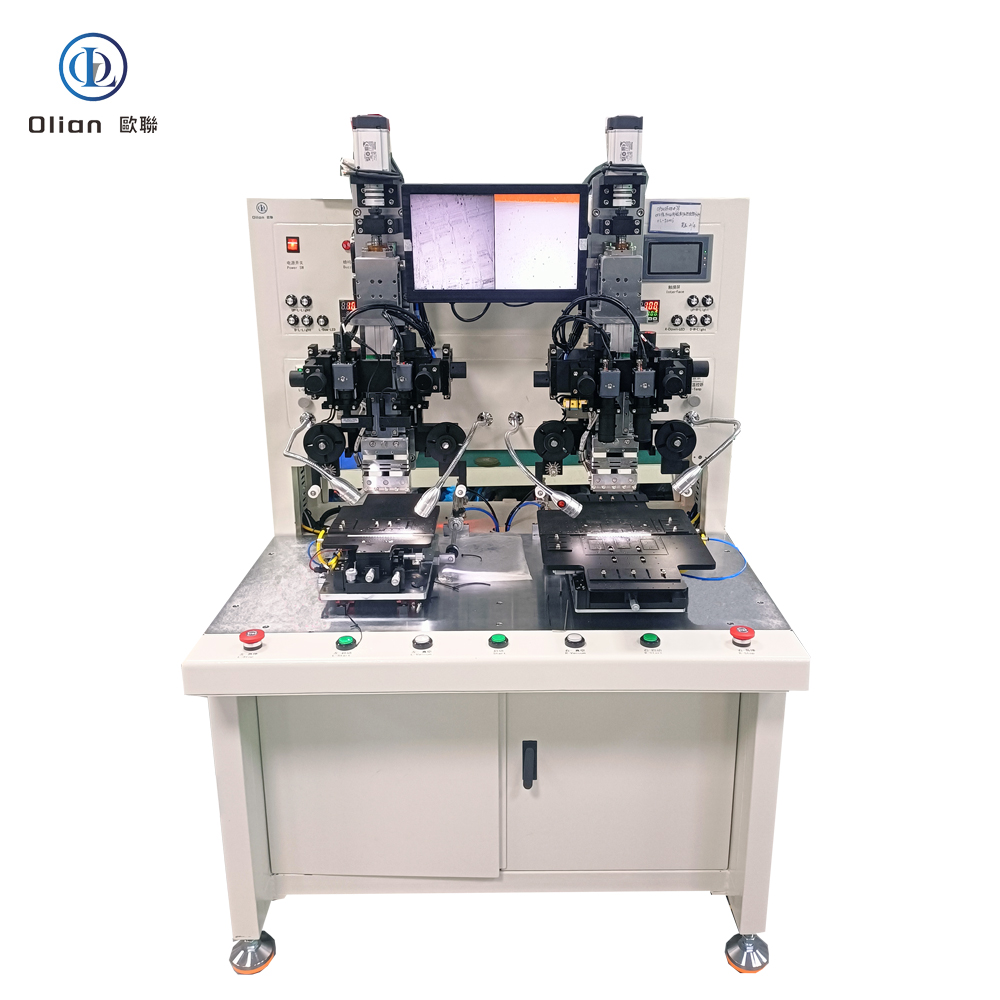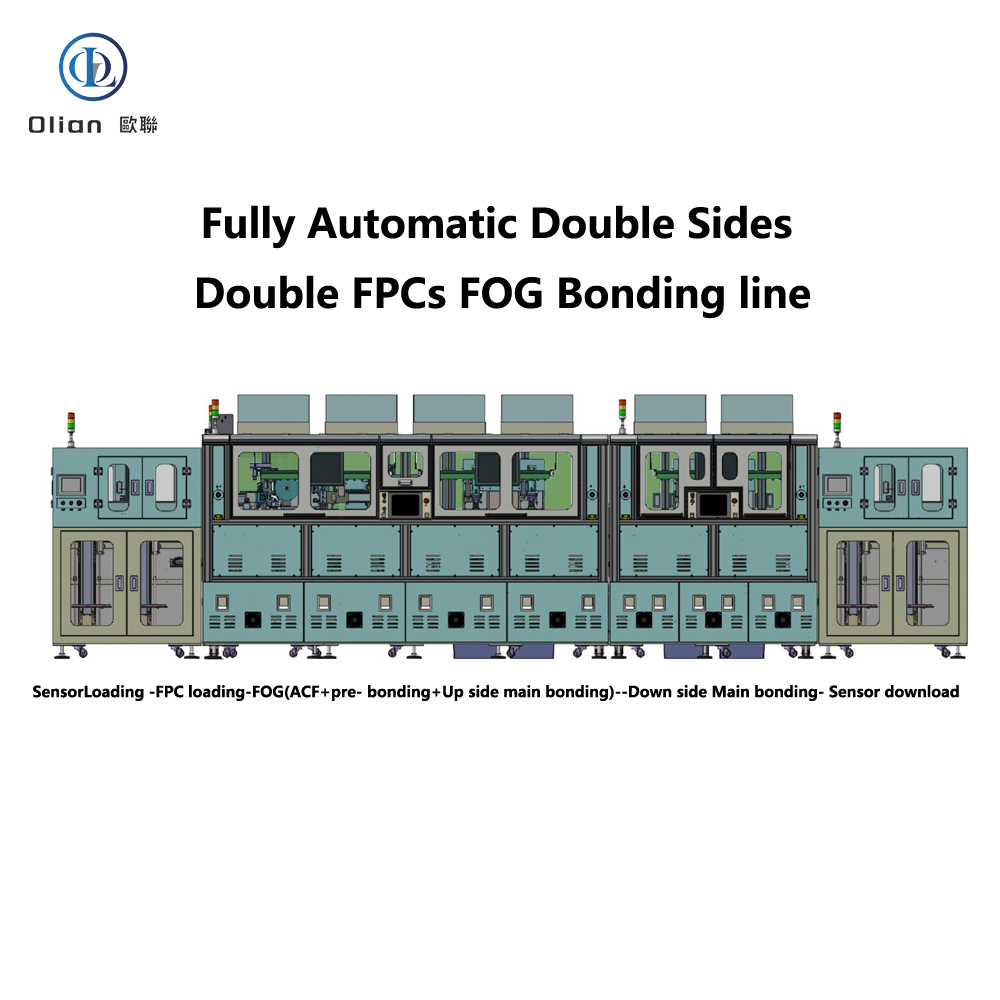

A flex cable bonding machine—often marketed as FPC bonding machine, flex bonder, or ACF flex welder—is the precision heart that joins a flexible printed circuit (FPC) or flexible flat cable (FFC) to glass, plastic, metal, or another flex, using anisotropic conductive film (ACF) and pulse-heat or constant temperature pressure. Every smartphone OLED, curved automotive cluster, 8-K TV, and disposable medical catheter you touch has passed through such a bonder. The machine aligns copper traces within ±1 µm, ramps temperature 200 °C/s, and forms thousands of vertical contacts in under three seconds—all while keeping lateral isolation > 1 GΩ. This guide explains physics, hardware, software, specs, applications, market trends, and maintenance for “flex cable bonding machine”, “flex bonder”, “ACF flex bonding equipment”, “FPC bonding machine”, “flex cable repair machine”, and every high-value permutation.








A flex cable bonding machine is a servo-driven, vision-guided, pulse-heat press that laminates anisotropic conductive film onto a substrate, then bonds a flexible printed circuit (FPC) or flexible flat cable (FFC) to that substrate with micron-level accuracy. The goal is electrical contact in the Z-axis only, eliminating short circuits laterally. The same platform reworks defective panels by removing the old ACF and rebonding a new tail, saving TV panel or phone OLED. Modern bonders achieve ±1 µm alignment, ±0.5 °C temperature stability, and 0.01 MPa force resolution on substrates as thin as 25 µm and as large as 100-inch TVs.
Rigid PCBs cannot fold; connectors add height and cost; solder joints fatigue. Flex cables absorb thermal expansion, survive 200,000 bend cycles at 0.2 mm radius, and hide behind 0.9 mm bezels. Automotive clusters demand vibration resistance from −40 °C to +105 °C; medical catheters require transparent, sterilizable PET that survives autoclave steam. Flex cable bonding solves these pain points while enabling repair: a defective tail is removed and rebonded without scrapping the entire assembly.
Bonding Head: Titanium alloy, diamond-lapped to 0.3 µm flatness, DLC-coated for anti-stick, lasts 300,000 cycles.
Pulse Heater: 800 W cartridge, embedded K-type thermocouple, ramp 200 °C/s, overshoot < 0.5 °C.
Force Actuator: Voice-coil or servo motor, 24-bit encoder, 0.1 N resolution, 2 ms response; active gravity cancellation for 25 µm glass.
Vision System: 12 MP global-shutter CMOS, telecentric lens, coaxial + side LED, sub-pixel edge detection repeatable to 0.2 µm.
Motion Stage: Cross-roller bearings, 0.05 µm linear encoder, servo feedback at 20 kHz, granite base with passive vibration isolation.
ACF Feed Unit: Stepper-driven, tungsten-steel cutter, anti-static vacuum, waste take-up spool, splice sensor for uninterrupted production.
Real-time Linux kernel guarantees < 1 ms jitter; PID temperature loop updated at 10 kHz. Recipe manager encrypts parameters—temperature, pressure, time, ramp rate—per product QR code. AI vision self-learns new pad patterns from vendors, reducing setup time 70 %. MES interface via OPC-UA uploads cycle data, resistance values, and images for full traceability. Cloud dashboard predicts heater degradation and schedules maintenance before scrap occurs.
According to industry analysis, the global flex cable bonding machine market is experiencing steady growth with a CAGR of 5–8 %, driven by foldable phones, automotive displays, and medical wearables. Asia-Pacific dominates production and consumption, with China hosting the largest supplier base
.
flex cable bonding machine, flex-cable-bonding-machine, flex bonder, ACF flex bonding equipment, FPC bonding machine, flex cable repair machine, pulse heat flex bonder, constant temperature flex bonding, foldable phone flex bonding, 0.2 mm fold radius flex bonding, 25 µm polyimide flex bonding, 100 inch flex bonding, automotive flex bonding, medical flex bonding, AI vision flex bonding, IoT flex bonding machine, China flex cable bonding machine, automatic flex bonder, flex bonding accuracy 1 micron, flex bonding temperature 200 C, flex bonding pressure 1 MPa, vertical conduction horizontal insulation, lead-free flex bonding, ROHS compliant flex bonding, flexible electronics bonding machine, flex cable ACF bonding, flex cable pulse heat press, flex cable constant heat press.
A flex cable bonding machine is no longer a niche press—it is the universal gateway between floppy copper and rigid glass, plastic, or another flex. By mastering sub-micron alignment, single-degree thermal control, and real-time force feedback, the latest flex bonders deliver sub-3-second cycles with 99.9 % yield and full Industry 4.0 traceability. Whether you are a display OEM chasing 0.9 mm bezels, an automotive Tier-1 qualifying 100-inch curved clusters, or a medical start-up prototyping transparent patches, investing in an AI-enhanced, IoT-connected flex cable bonding platform future-proofs your process.